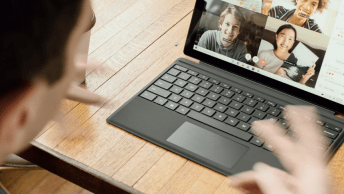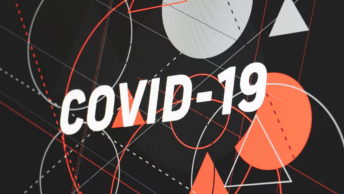Since it was declared a pandemic, COVID-19 has pushed almost every country’s government on the planet to come up with an official contact tracing mobile app.
Here, we evaluate the UX of top 12 official, government-backed, contact tracing apps of various countries and find if their designs are any solace to the citizens.. Since it was declared a pandemic, COVID-19 has pushed almost every country’s government on the planet to come up with an official contact tracing mobile app.
Here, we evaluate the UX of top 12 official, government-backed, contact tracing apps of various countries and find if their designs are any solace to the citizens.
CovTracer, Cyprus
CovTracer tracks people through GPS technology. The UI looks cluttered. Colors, fonts used in the app are different at different screens. The forms are not well designed, available real estate isn’t utilized well, buttons design isn’t consistent. Language used in the app is not simple. For example, Start logging isn’t something that can be easily understood. Options such as import or export don’t make sense to a new user.
Aarogya Setu, India
It requires bluetooth and location services to be on and follows a conversational design approach. It mentions that the data is shared only with the Government of India and takes consent from users before moving to the next step. Setting up the application is super easy. You need to provide personal details and answer health related questions. App is flexible enough to let users take a self assessment test later. Arogya Setu provides features such as call helpline number, self assess, COVID updates and other useful resources.
TraceTogether, Singapore
TraceTogether supports 8 languages & follows a minimalistic design approach.The language used in the app is modern and conversational. Informing the users that their data is used only when needed and clearly communicating how the app is helpful makes it meet its objective while trying to be as little invasive as possible.
Using a wizard for registration ensures process completion. Aesthetics are pleasing.
eRouska, Czech Republic
eRouska app is easy to set up. It requires registering phone number, enabling both bluetooth and location services. To combat privacy issue, the users can see the history of their data use. But this is where the good things end. There’s an information overload in the help section, the chat section redirects the user to a browser while the information of the team behind the app serves no purpose really.
COVIDSafe, Australia
COVIDSafe clearly mentions that it doesn’t collect location information, and you can even ask for your information to be deleted from the secure serve. However, COVIDSafe struggles to reduce the information overload. The UI doesn’t give the feel of a native app. There’s an option to enter a mobile number that is not Australian but requires an Australian number to register. This doesn’t align with the users’ mental model.
Rakning C-19, Iceland
The tone and mood of the app is very relaxing and is pleasing to the eye. Rakning C-19 supports 12 languages. It requires registering your contact number, enabling location services and you are all set. Rkaning C-19 ensures that location data is saved on the user’s phone only and isn’t shared unless the user allows. App is very clean and follows a minimalistic design approach. It provides a feature to start Live Chat with health officials with a list of clinics is also provided.
SwissCovid, Switzerland
According to a research by NN/g, 94% of the first impressions are design related and SwissCovid’s design nails that aspect. User onboarding has nice illustrations with relevant information following an empathic approach. The only issue is that there is no skip or go back button. The app is easy to set up. It explains every how and why to the user in a plain language. SwissCovid uses bluetooth for tracking people.
StopKorona!, North Macedonia
Supports 3 languages, though the option to change language isn’t easy to find. It provides an option to skip user onboarding steps thus putting the user in the driver’s seat. App gives a fresh look. It takes consent from the user to store mobile numbers and use bluetooth and location. App doesn’t support other countries’ contact numbers. Once you register your contact number you land on the home screen and you are all set
Stopp Corona, Austria
Uses nice illustrations with minimal text to clearly convey the information to users thus following the Less is more approach. App uses bluetooth to keep track of infected people. Digital Handshake feature allows users to anonymously save their encounters and are notified if one of the encounters falls ill. App gives users control and freedom to disable the active handshake feature. It provides an option to check symptoms and report medical confirmation.
SimtteStop, Denmark
Supports only Danish language. It requires you to enable bluetooth and location services. Guess what! If you don’t want it to register users that you are close to, you can simply turn off the app. Thus giving users complete control and freedom, No need to uninstall or log out. Smittestop gives priority to data protection & complies with regulations aimed at protecting users data. Considering the fact that COVID is a global problem, app should support more languages.
Immuni, Italy
Immuni’s User onboarding is quick, clean and helps users understand how the app works. The app follows a minimalist design approach.Information is presented in a clean and concise manner. Language used is simple and conversational style. A separate screen ensures complete explanation to data use and privacy. Immuni follows empathy driven design.
HaMagen, Israel
Israel’s HaMagen app launched by the Ministry of Health supports 6 languages. HaMagen also follows a minimalistic design approach by providing a clean UI and only necessary details. But it doesn’t give the look and feel of a native app. The app is simple to set up. It takes consent from the user before collecting their location data and has an optional step where users are asked to allow access to locations within the last 14 days from Google.
Closing Thoughts
Despite their uncertain role in helping contain the spread of the virus, it is commendable that the governments took the help of technology and design to aid their citizens deal with unprecedented times.
As mentioned before, while bluetooth offers for better data privacy, it has it’s share of accuracy issues. For example, A bluetooth-based contact-tracing app that sends a signal when two users are close to each other might not recognize when they are separated by a window or walls.
Another issue that the technology suffers from is cybersecurity. The next best option, GPS, also grapples with it’s share of problems. An app that used cellular location data would also pose significant privacy concerns, as tracking could be applied unilaterally. This could bypass the need for user consent and violate citizens’ data protection rights.
Ultimately, it’s a combination of technology and design that can offer an optimum experience to a panicked user. Also, in our comparison of the apps, it is noteworthy that even countries not considered technologically advanced have also fared at par, if not better, with technological leaders. Apps from North Macedonia, Israel, Cyprus and India just go on to show that design talent is not hindered by the adversity of a country.
One just needs to have an inquisitive mind.








